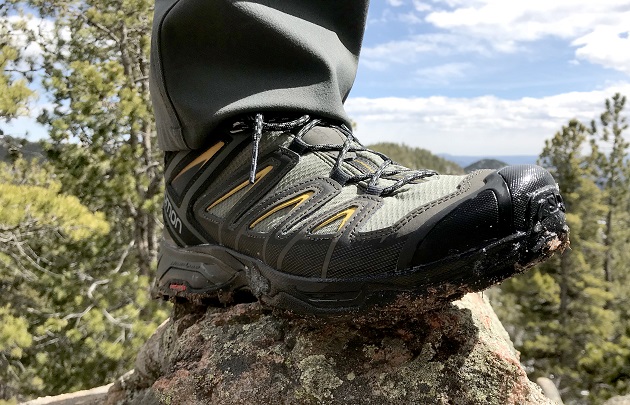Choosing the right style of hiking shoes is a matchmaking process. Buy yourself a good pair of footwear to protect your feet and the trails are your oyster. And although hiking shoes come in a variety of shapes, sizes, and colors, at the end of the day they all do the same thing – provide a platform to keep you hiking along your chosen path comfortably and well protected. But before you tie the knot and splurge on your new adventure ally, there are some factors to consider to make the best buy. Here’s a bit of help on the matter.

Application – What Is Your Quest?
The terrain, season, weather, as well as how much weight you’ll carry are all factors to consider when buying hiking shoes. Envision what you plan on getting up to in your new cool kicks – everything is up to you. Deciding upfront how you plan to use and what you hope to get out of your hiking footwear is a great start toward maximizing your comfort and performance when exploring the great Australian outback. Think about it – will you mostly hike on well-maintained trails? Rocky ridgelines and scrambles? Maybe long stretches of sandy beach? Or a lot of in and out of the water? And what about the climate of the area where you plan on traveling?
Furthermore, your payload is usually a function of the distance and duration of your hike, so calculate how much weight you carry when your pack is fully loaded. This can help you choose the level of cushioning and the support your footwear should ideally have. If you mostly hike during daytime and only carry a rain shell, water, and some lunch, you’ll probably be fine with shoes that feature minimal cushioning and support. On the other hand, if you do a lot of backpacking and most of the time the load you carry is heavy, your best bet is investing in hiking shoes with a stiffer design and a solid amount of support.

Get the Fit Right
It is no secret that poor-fitting footwear can result in discomfort and injury, so if you are shopping from a brick-and-mortar store before buying – try on the shoes. If you are shopping online, however, make sure you know the exact dimensions of your feet. Just like with any other sport, your choice of footwear can make or break your experience and either enhance or negatively affect your performance. Your footwear should fit snug, but not too tight as it will distract you and cause you pain. At the end of the day, go for a pair of hiking shoes that fits well with your foot and satisfies your comfort preferences.
The Right Material
The weight, breathability and durability of hiking shoes are all heavily influenced by the material they are made from.
- Leather – Shoes made from leather are incredibly durable and over time mold to your foot, getting softer as they age. Many hikers claim that their soles wear out faster than the uppers, so most people send them to a cobbler when they can no longer rely on their old adventure buddy.
- Synthetic – In the world of today, synthetic materials such as nylon, polyester and synthetic leather (PU/TPU) are kind of taking over footwear. Being very lightweight and quick-drying, synthetics are highly versatile and can be found in the designs of most modern offerings. They’re also nice and durable enough for you to kick rocks aside when conquering your trail.
- Mesh – Breathable mesh is the cream of the crop for warm weather hiking enthusiasts. Mesh allows air in and out of your shoe constantly, making the particularly hot days much more bearable. Although it is a bit on the delicate side, this material is often incorporated with other synthetic materials, like cage layover, to improve its durability. The best part about mesh is that it dries really fast, so if you happen to land in a puddle or trek through a creek, you’ll be dry again in no time.
The Underfoot
What lies between your feet and the terrain can make a world of difference in your experience.
- Insole – Also called a ‘sock liner’ or ‘footbed’, the insole is the piece that sits right below the sole of your feet. It can be either soft and flexible, or more rigid for greater support. Some models are more ventilated than others, but most will wick moisture just fine and keep your feet and/or socks dry. Almost all insoles are removable, which means you can use them based on your comfort preferences. You can take them out for washing and drying, or even replace them with custom orthotic inserts.
- Midsole – This is the part that determines the stiffness/flexibility balance, and it is also where a great part of the cushioning comes from. Midsoles are usually made of EVA (ethylene vinyl acetate), PU (polyurethane), or a combination of the two. EVA is the soft and lightweight variety of foam that provides shock absorption, while PU is much stiffer and desirable due to its supportive and durable qualities.
- Outsole – This is where the rubber meets the earth. Outsoles come in many different forms. The softer compounds will flex more but wear out faster while the hard ones are the total opposite. The sole pattern of hiking shoes typically has lugs facing various directions which are meant to help grip as you walk up, down, left, and right. Therefore – the deeper the lugs, the greater the surface area that grabs onto the ground.




